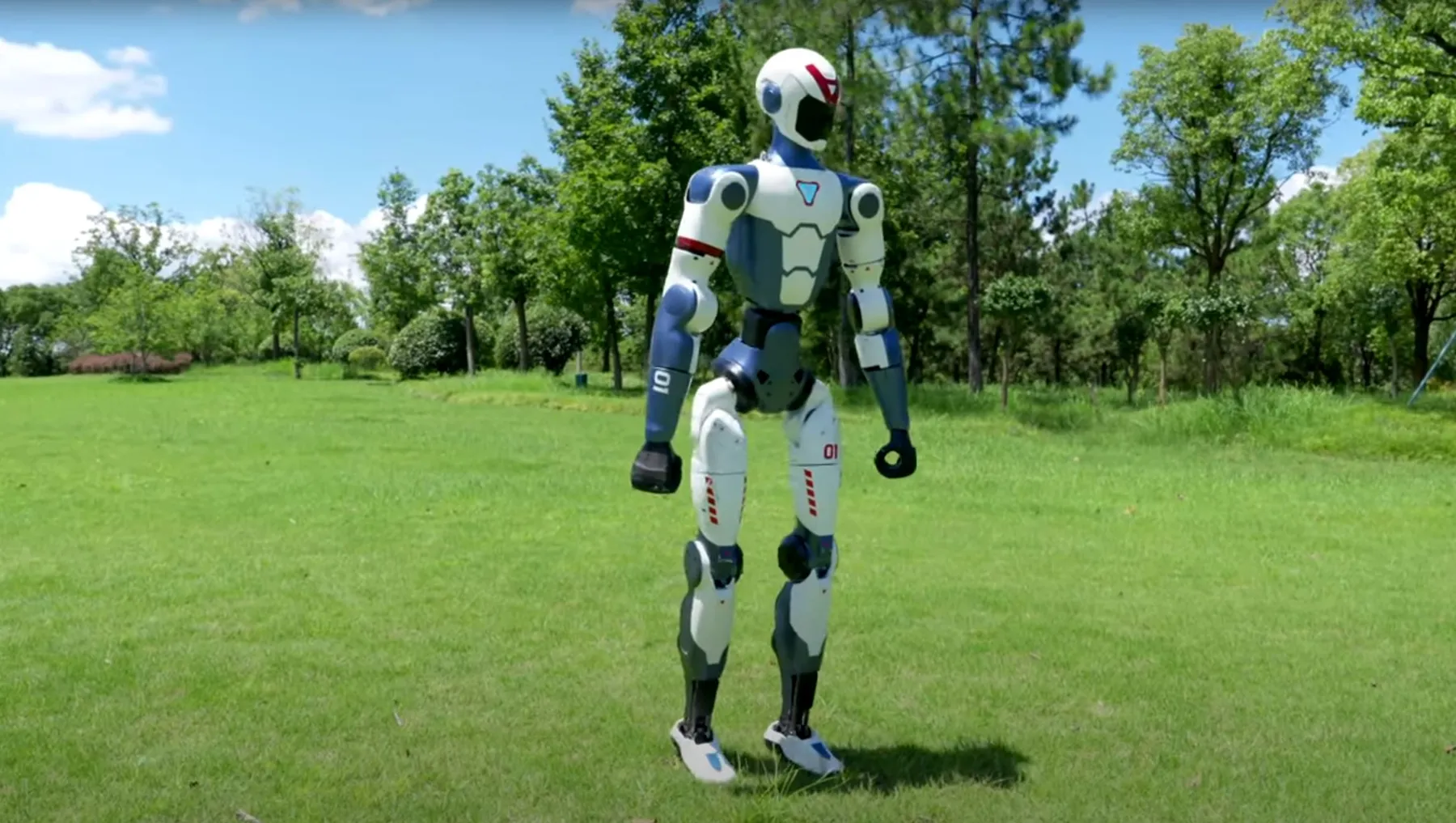The robotics industry just experienced a seismic shift. China’s Unitree Robotics has introduced a game changing humanoid robot the R1 priced at an astonishingly low $5,900. This bold move not only breaks down financial barriers but signals a new chapter in the mass adoption of humanoid robots in both homes and workplaces. The Unitree humanoid robot might just be the gateway to a future once considered exclusive to big corporations and research labs.
The Rise of Affordable Robotics: Why Unitree’s Move Matters
Until now, humanoid robots were synonymous with sky high costs. Boston Dynamics’ Atlas and Tesla’s Optimus prototypes are both multimillion dollar endeavors. In contrast, Unitree’s R1 humanoid robot is not just a technological marvel it’s a financial revolution.
Unitree, already known for its nimble quadrupeds like the Go1, has shifted its focus to humanoid AI. The Unitree humanoid robot weighs just 25kg and boasts 26 degrees of freedom, allowing for lifelike motions and interactions. Powered by multimodal AI including voice and image recognition this robot promises to be more than a machine. It’s a potential assistant, educator, or even companion.
Unitree’s pricing strategy could democratize robotics says Dr. Li Chen, a robotics engineer at Tsinghua University. At under $6,000, startups, schools, and even tech savvy households can now access cutting edge robotics.
What the Unitree Humanoid Robot Can Actually Do
Let’s break down the capabilities of the Unitree humanoid robot.
Mobility: With 26 joints, the R1 moves fluidly mimicking human walking, crouching, and object manipulation.
AI Integration: Built in image and voice recognition allow the robot to interact conversationally and adapt to environments.
Modular Design: Developers can customize functions through Unitree’s open SDK, making the robot adaptable to different tasks.
These features make it suitable for, Educational robotics labs, Customer service roles, Smart home assistants, Light industrial automation.
Robotics in the Classroom A Chinese High School Pilot
Earlier this year, Beijing No. 4 High School partnered with Unitree to pilot its earlier generation bots in computer science classes. With the launch of the R1 humanoid robot, the school now plans to replace traditional tools with fully interactive humanoid AI.
It’s a transformative experience, says Ms. Zhao Yumei, head of the STEM department. Our students aren’t just programming they’re interacting, experimenting, and learning through a physical interface. The school believes the R1’s affordability makes it feasible to expand to all classrooms within the next two years.
Can a Budget Robot Deliver Premium Performance?
Despite the excitement, skeptics question whether the Unitree humanoid robot can live up to expectations. Lower price points often mean trade offs in hardware, battery life, or durability.
Dr. Ravi Kumar, a robotics consultant at MIT, voices caution. It’s a remarkable achievement, but let’s be real the mechanics and sensors in a $6,000 bot won’t rival a $100,000 research grade robot. However, it doesn’t need to. If it performs 60 to 70% of tasks well, that’s already a revolution for home users and developers.
Battery life and fine motor control will likely be the first bottlenecks. But the open architecture provides hope third party developers could improve software layers and even hardware extensions.
Why I Ordered a Unitree Humanoid Robot
As a freelance tech reviewer and AI enthusiast, I pre-ordered the Unitree humanoid robot within an hour of its announcement. Here’s why.
1. Affordability: I never thought I could afford a humanoid robot on a freelancer’s budget.
2. Experimentation: With open APIs and dev friendly architecture, it’s a dream for coders like me.
3. Use Cases: I envision it assisting in basic home automation, perhaps even reading bedtime stories to my daughter. While I understand its limitations, the sheer potential for interaction and learning outweighs them.
The Domino Effect of Affordable Humanoid Robots
The launch of the Unitree humanoid robot could trigger a global domino effect. Competitors especially in the U.S., South Korea, and Japan may be pressured to introduce affordable models. Schools, SMEs, and startups now have a viable entry point into the humanoid AI space.
There’s also a broader geopolitical angle. China’s early domination in accessible robotics could shift innovation leadership. By lowering barriers to entry, China may secure a dominant user base for future robot ecosystems just as it did with smartphones.
The Future Is Human And Robotic
The Unitree humanoid robot is not just a product. It’s a symbol of accessibility in tech a rare moment when futuristic innovation becomes tangible for everyday users. While perfection isn’t expected, participation is. And with thousands of R1 bots potentially rolling into homes, classrooms, and shops worldwide, we may be witnessing the start of a humanoid boom one with Chinese roots and global impact.
If robots are to become a part of our daily lives, they must be affordable, functional, and relatable. Unitree’s R1 checks all three boxes and it’s just getting started.

